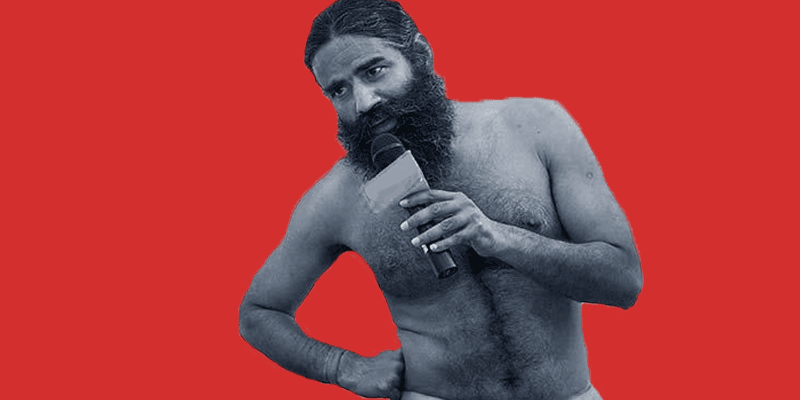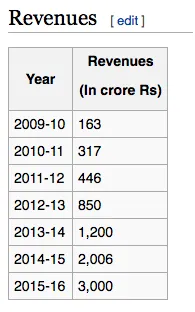Content marketing and monetisation lessons from yoga guru Baba Ramdev
Everyone is surprised to see how brand Patanjali is giving other FMCG companies in India tough competition. It may look like an overnight success, but it’s not.
Why is the Patanjali brand so successful? Is it because of its swadeshi brand or organic products? Even brands like Dabur and Himalayas were around for so many years selling Ayurvedic and Indian products. But what is so special about Patanjali?
When I was looking at this company from the content marketing perspective, I observed an interesting connection between the brand’s success and content marketing.
I see yoga education as a form of content. Baba Ramdev started teaching yoga to a small group in 1995. Gradually, a small yoga group turned into a nightmare for FMCG companies in India.

Here is what I learnt about content marketing from the yoga guru Ramdev.
#1. Understand the needs of your user
Baba Ramdev understood the needs and issues of his audience by working personally with them.
Yoga is not a new concept, at least in India. Indians have been practising yoga from ancient times. What makes Baba Ramdev stand apart is the core understanding of the audience and helping them with the right kind of yoga practices.
You can find a unique and easy way of using ancient yoga for curing ailments through the discourses and CDs of Baba Ramdev.
If you want to master content, then work closely with your users and create something valuable for their well-being.
If you are still thinking about running a startup on a low budget, then it’s the best time for you to understand your customers. Read my lessons to prepare yourself for startup before quitting your job.
It will work, regardless of the industry.
#2. Content marketing takes time
We have seen the growth of Patanjali products in recent years, but it took Baba Ramdev more than 15 years to build the brand and trust of the audience.
Baba Ramdev has a cult-like following and it takes an enormous amount of effort and time to build the audience.
For first 10 years, they never thought of launching the products. They were just delivering a great content to help as many people as possible.
You have to be persistent and patient when building your audience through content marketing. You may hit a jackpot of virality in few days, like our viral video on Facebook, but it again takes time to repeat the viral campaigns on the regular basis.
#3. Content is scalable
Start small with content marketing experiments and scale with time.
Patanjali never advertised on TV initially, but they have used different mediums of content distribution at different stages of growth.
They prepared CDs and DVDs of yoga courses and distributed to the audience during their yoga discourses. They were not making a big profit from CDs. But it helped them reach their audience and they attracted more people.
Reaching out to a mass audience through physical classes and DVDs was not scalable. They found next big distribution for scaling their yoga content.
Aastha channel started featuring Baba Ramdev in 2003.
The opportunity of coming daily on Aastha channel opened the doors to reach out to crores of people.
#4. Know where is your audience
The Aastha channel was watched by audience aged over 45 years who were suffering from one or more ailments.
Baba Ramdev was able to reach out to the his “target audience”. They might not have thought in that way, but we can learn this lesson from the great brand.
The audience was sticky. Elder people wake up early in the morning. The early morning yoga lessons helped them improve their health.
As marketers, we should find where is our audience and how to engage with them.
#5. Gaining the trust of audience
In few months, people were flocking in the meditation and yoga camps organised by Baba Ramdev. It’s easy to get more audience when they start trusting you.
Baba Ramdev was able to build the trust and delivered the value as per the expectations of his audience.
A lot of people were getting benefitted from the content through CDs and TV. Many people attended the courses who felt more connected with yoga and looking for deeper experiences.
A lesson for fellow marketers, you cannot fake to gain the trust. You have to win the trust and genuinely deliver the value.
#6. Testing MVP with audience
Patanjali products could not be successful without having a strong audience in early days.
Baba Ramdev started selling Ayurvedic medicines before launching the products in the market.
In marketing, we call it testing the MVP before launching the complete product. Patanjali saw a strong demand of Ayurvedic products in Indian market. The early success validated their business model.
They started adding FMCG products and became the most trusted consumer brand in India.
#7. Customer first, company incorporation later
You will be surprised to know that Patanjali Ayurveda was incorporated as a legal product company in 2006.
They already had a strong audience presence throughout the country.
They were not following the lean startup canvas, but that happened naturally as they grew.
For me, it’s a lesson that I would like to use in my startup ventures. We should focus on the customer and figure out product market fit before spending time and money on establishing legal entities.
I already lost 15,00,000 in my first startup and do not want you to repeat my mistakes.

#8. Dominate the market
Patanjali has witnessed a growth from revenue of Rs 163 crore in 2009-2010 to Rs 3000 crore in 2015-2016.
It took almost 20 years to reach a 3,000-crore company. In my view, content marketing played a major role in the success of Patanjali.
If you want to dominate any market, ask yourself, do you have patience to perform consistently for 20 years?
If yes, then start investing your time in content marketing. It’s probably the only option left to dominate the market with a low marketing budget.
Did you learn any other marketing lesson from Patanjali that I might have missed?







